The Tudor Black Bay Ceramic, the METAS Connection, and Why Master Chronometer Matters
A major technical move from the Rolex Group... Oh, and there's a watch too!
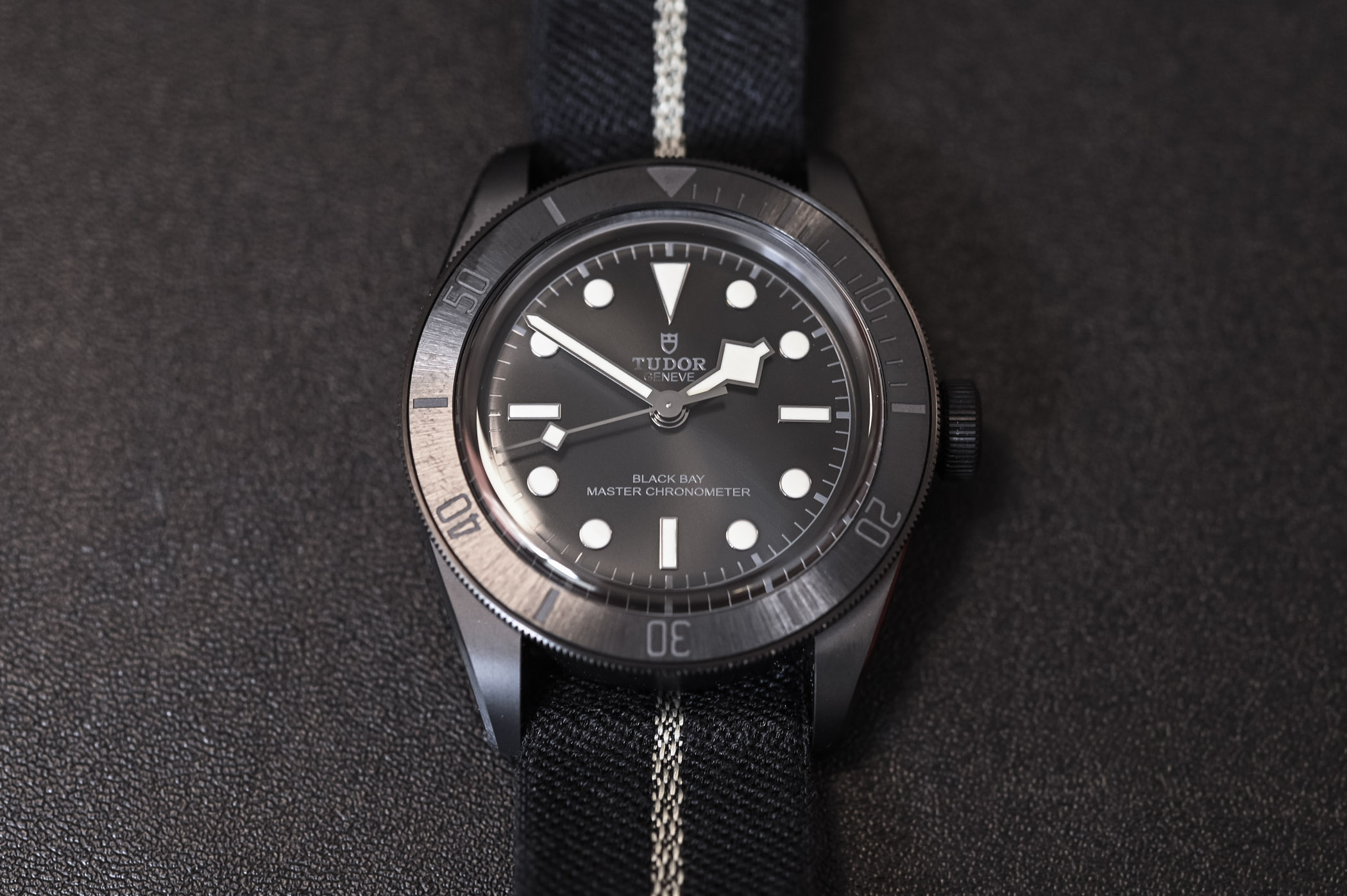
About a week ago, Tudor, the trendy and stronger-than-ever sister-brand of Rolex, presented a new watch, the Black Bay Ceramic. While good-looking and made from a material that is a first (almost) for the brand’s successful dive watch, there is much more behind this watch than just a new look. Tudor could have stopped its development here with this new ceramic model, and it would have been fine. BUT (yes, it’s a big one), there is something under the hood that means a lot, both for Tudor, for the industry and for the Rolex Group. This watch is indeed a Master Chronometer, a watch that has been certified according to the ultra-demanding standards defined by METAS, with impressive accuracy and top-tier magnetic resistance. And that’s the first time we see this on a watch that isn’t an Omega. Today, we’ll have a look at this new Tudor Black Bay Ceramic M79210CNU, but mostly, we’ll explain what the Master Chronometer certification means.
First… the watch
Let’s deal with this topic first. Not that it is negligible, but it’s not the most surprising thing here. What Tudor introduced a few days ago is basically the darkest watch in the classic Black Bay collection. There has already been a “Dark” edition of the BB41 in the past, which was equipped with a stainless steel case coated in PVD. Obviously not the best solution in terms of durability, and in any case, this model has since been discontinued.
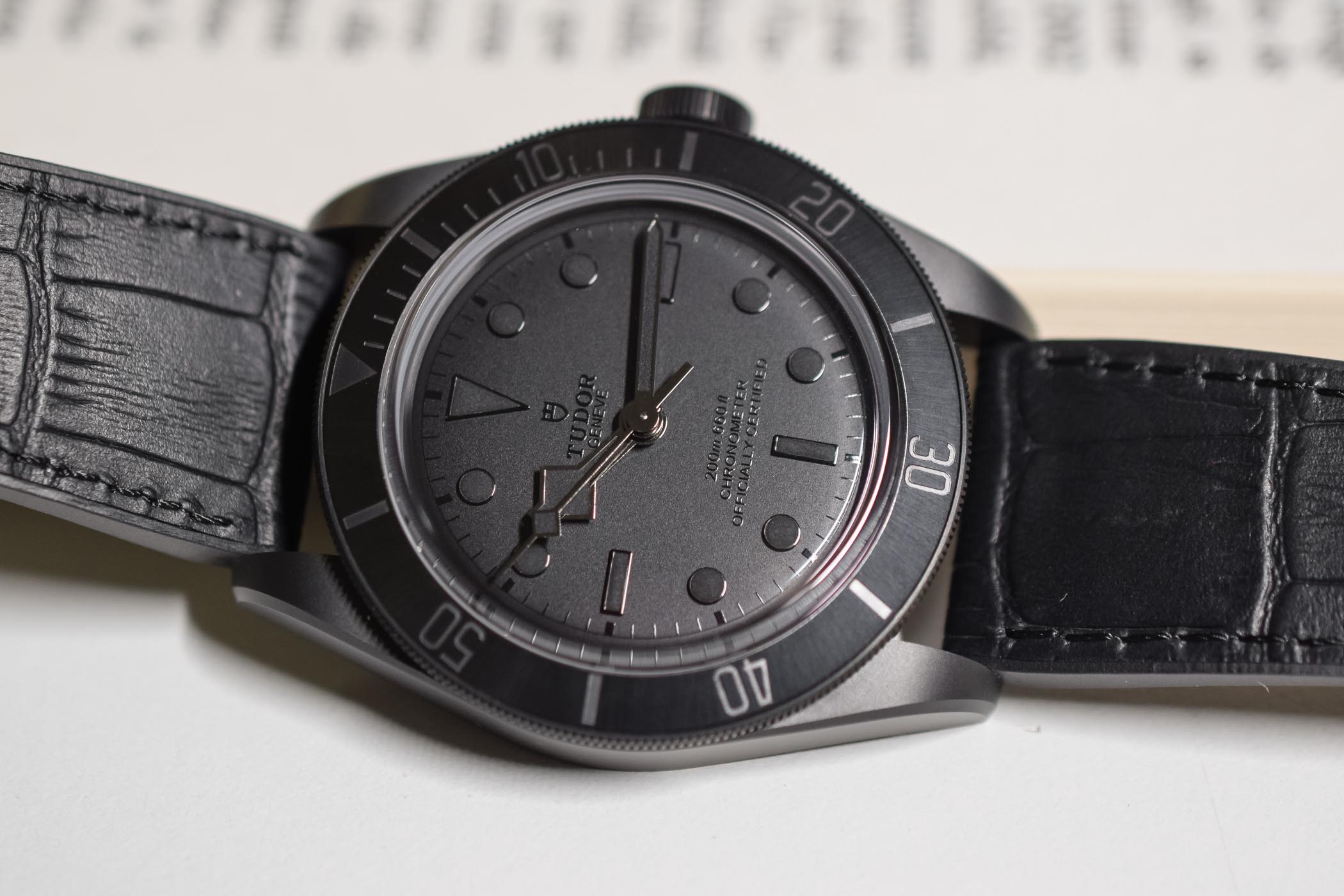
The new Tudor Black Bay Ceramic doesn’t entirely come out of the blue and was announced two years ago with a unique piece made for the charity auction, Only Watch 2019. With its entirely black colour scheme – hands, markers, and lume included – it was certainly not meant to become a commercial product. Still, it was a teaser for the watch you see today. Basically, most elements of the 2019 Black Bay Ceramic One have been reintroduced, and a few updates have been made to make the new model wearable on a daily basis.
So what we have here is a rather attractive watch with a full-black colour scheme, yet most of the design cues of the Black Bay collection are respected. As such, the middle case is made from a single block of ceramic and features classic proportions and decorations. The case is 41mm in diameter, with a height of approximately 14mm. The shape remains that of all BB41 models, however, with a matte microblasted finish all over, with the exception of the signature polished bevels on the side of the lugs.
Concerning all the other elements of the habillage, Tudor has made some slightly debatable choices, in my opinion. Certainly, all are coherent in terms of colours and finishing, but the materials remain too classic. For instance, the winding crown, still unprotected, still oversized, still screwed-down, still showing the vintage Rose logo, is made of PVD-coated stainless steel. The same goes for the bezel itself (not the insert), which is identical to other Black Bay watches, meaning that it is made of stainless steel and later coated with PVD. Being one of the most exposed parts of a watch, the option for a monoblock ceramic bezel would have been more relevant – PVD isn’t the most resistant of coatings.
Finally, there’s the bezel insert. As for the middle case, it is made of black ceramic (again, new to the Black Bay that usually relies on aluminium inserts) and shows a very appealing sunray-brushed surface. First of all, it truly animates the watch and provides it with reflections. It catches the ambient light and breaks the matte, monochromatic style used for the rest of the watch. On this front, it is a success. More questionable for some is the use of an engraved black 60-minute diving scale. Certainly, the difference in finishing and height of the numerals make them easy to read in daylight conditions, but the graduations lack contrast in low light, and no luminous pearl has been applied on the triangular marker, which is used for the start of diving calculations. There is no doubt that Tudor has chosen design and looks over performance underwater. Personally, I don’t mind because I think this insert looks great. Also, in my opinion, this Tudor Black Bay Ceramic is more a lifestyle watch than a proper diving instrument, so it is not an issue. And finally, who really uses the diving scale in low light conditions anyways? Less than 1% of the owners, maybe. And for them, Tudor has a far more capable dive watch, the Pelagos.
For the rest, the Tudor Black Bay Ceramic remains faithful to the elements that made its stainless steel predecessors so successful, with a vintage-looking ultra-domed sapphire crystal on top and a 200m water-resistance that has been respected here despite the updated materials and the presence of a see-through sapphire crystal on the back.
The dial of this new M79210CNU is rather classic yet far more usable than the one used for the unique piece of 2019. The base of the dial is still domed and is black with a sunray-brushed pattern, thus different from the usual matte grained surface used on the steel models. Also, the hands, the tracks and the applied indexes are executed in dark grey, providing enough contrast yet still in line with the dark theme of the watch. The design is classic, with a no date display and the signature snowflake hands and round, triangular and rectangular indexes for the hours. All the elements of the display are generously filled with beige-coloured Super-LumiNova, giving this Black Bay Ceramic a slightly warmer touch. And one of the benefits of the Master Chronometer movement is the reduced literature on the dial at 6 o’clock – two lines only compared to the three lines found on the steel models (the depth rating has been removed).
Finally, Tudor offers this Black Bay Ceramic Master Chronometer with two straps. First is a so-called hybrid rubber strap with a waterproof leather insert and closed by a black PVD-coated folding clasp with a safety catch. Also included in the package is an additional black fabric strap with a cream stripe and black PVD-coated hardware.
Regarding price and availability, the Tudor Black Bay Ceramic Master Chronometer (Ref. M79210CNU-0001) is launched as part of the permanent collection and won’t be limited in production. However, due to the complex certification process, this watch won’t be produced in extremely large quantities for the time being. It is now available from retailers and will be priced at CHF 4,500, EUR 4,440 or USD 4,725. This is about EUR 1,100 more than a stainless steel model with a movement that is COSC certified. The difference lies in the presence of ceramic parts, in the new movement and the improvements made to obtain the Master Chronometer certification. It remains a fairly impressive price considering the overall quality of the watch and the technical content found in the calibre.
The Tudor Black Bay Ceramic Master Chronometer comes with a 5-year transferable guarantee with no registration or periodic maintenance checks required. Tudor recommends 10-year service intervals.
METAS and Master Chronometer
Up until 2015, when a Swiss brand wanted to make sure that its watches were accurate enough to have the word chronometer printed on the dial, it would send its movements to the COSC, the Contrôle Officiel Suisse des Chronomètres – a Swiss non-profit organisation that tests chronometers that are Swiss made (and only Swiss made; a French, Japanese or German watch can’t be COSC certified). It is also important to note that to have the word chronometer or chronomètre printed or engraved on the dial, a watch MUST have been tested by a certified organisation, whether COSC or another approved observatory.
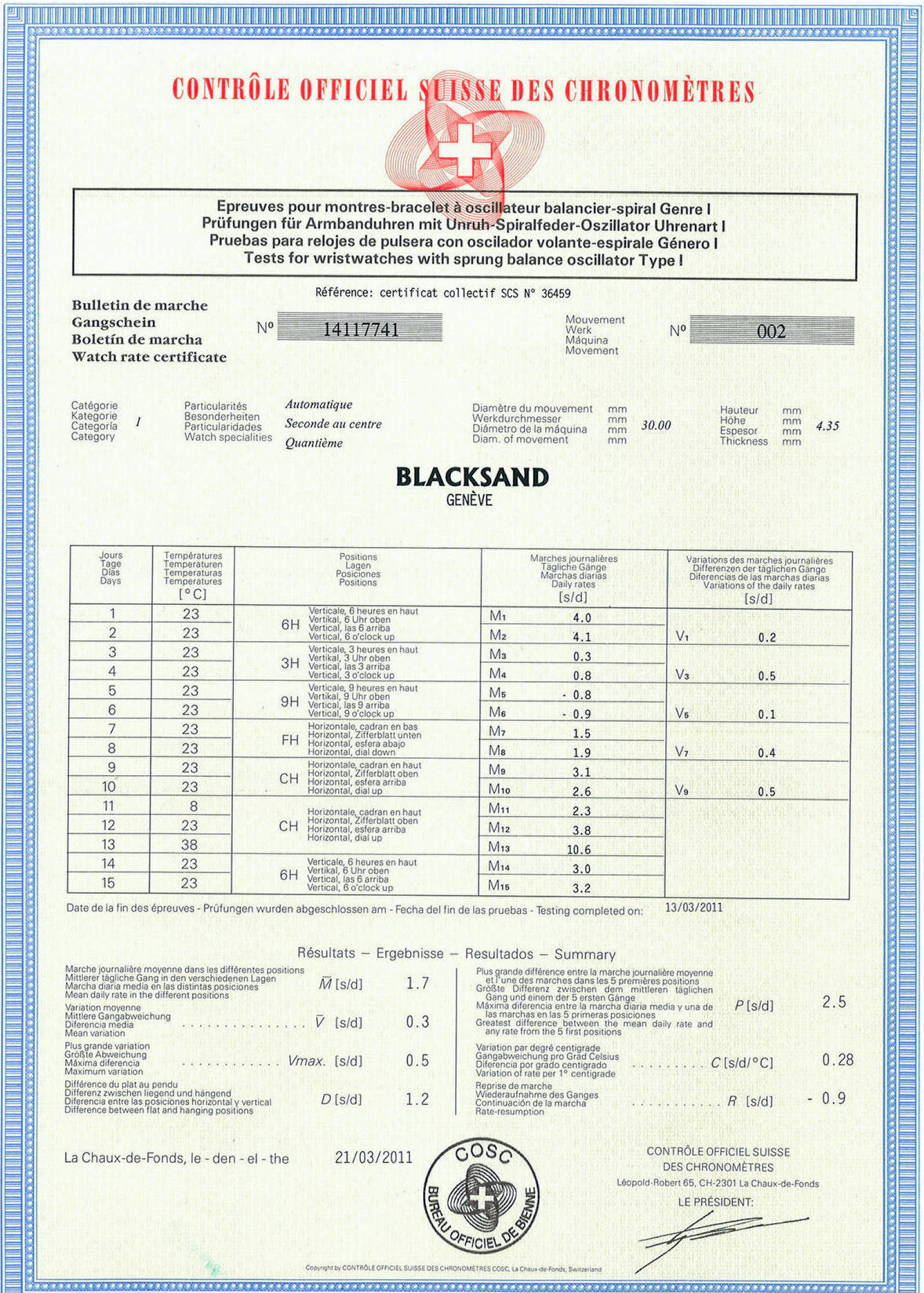
Even though the COSC has recently updated its testing procedure, the idea is to verify the precision of a movement or watch head according to multiple criteria (7 of them to be precise, including average daily rate, mean variation in rates, the difference between rates in horizontal and vertical positions or variation in rate depending on temperature). The procedure runs for 15 days and solely looks at the precision of the watch. Still, the COSC remains an important member of the Swiss watch industry and is still used by multiple brands to verify and certify the precision of their models – Rolex, for instance, still uses COSC.
What has drastically changed in 2014/2015 was the introduction of a new testing procedure, named Master Chronometer, and developed with METAS, the Swiss Federal Institute of Metrology, and Omega. However, it is important to note that from the earliest days of the project, the Master Chronometer has been accessible to all brands who wanted to apply and isn’t an in-house standard of Omega. This explains why, today, Tudor and the Rolex Group can announce watches with the Master Chronometer certification too.
What is the Master Chronometer certification? METAS has developed a testing procedure that goes far beyond the classic chronometer certification (according to the ISO 3159 standard). This new standard covers 8 technical criteria, which were first developed jointly by Omega and METAS, and explained in a document named METAS N001 – which can be downloaded here if you want to dig into the details. Whereas the ISO 3159 standard only requires the movement to be tested, the Master Chronometer certification tests encased and finished watches.
There are pre-requisites to Master Chronometer certification, however. First, just like COSC, the watch must be Swiss made and meet the requirements stated by the Swiss government. Second, the movement must be certified as a chronometer according to ISO 3159:2009 by an accredited laboratory. In this case, be it Omega or Tudor, movements are first tested by COSC before being encased and then sent to a METAS-certified laboratory for the Master Chronometer certification. Then, the movement and the watch must undergo test cycles and meet the technical criteria. METAS monitors the laboratory test results by carrying out a statistical analysis and checks on random samples. Finally, the testing laboratory has a quality system approved by METAS.
So, what exactly is tested during the Master Chronometer certification? METAS Master Chronometer certification is comprehensive and covers the main functional characteristics of a watch, including precision, resistance to magnetic fields, waterproofness and power reserve.
- Precision: a watch must be able to function within a 5-second range of variation each day (0 +5), that is to say, 5 seconds less than COSC (-4 +6) carried out on a single movement and a second less than TUDOR’s internal standard, which is applied to the brand’s models with a Manufacture Calibre (-2 +4). The tests are carried out over 6 positions and 2 temperatures.
- Magnetic resistance: watches with Master Chronometer/METAS certification must retain timekeeping accuracy when subjected to magnetic fields of 15,000 gauss. The industry standard for an antimagnetic watch (ISO 764) claims that an “antimagnetic watch” should resist fields up to 4 800 A/m, which corresponds to only 60 gauss.
- Waterproofness: the waterproof capability claimed by the manufacturer conforms with the International Organization for Standardization (ISO) standard 22810:2010.
- Power reserve: same as above, the power reserve claimed by the manufacturer conforms with the International Organization for Standardization (ISO)
- Swiss made: the watch must conform with the criteria of Swiss Made, and the movement must be certified by the Swiss Official Chronometer Testing Institute (COSC)
It is worth mentioning that METAS doesn’t test the watches in a dedicated laboratory, as COSC does, for instance. The Master Chronometer procedure can be performed in-house, under the supervision of METAS – which monitors the results, certifies the tools used to measure and checks random watch samples. For instance, Omega performs the Master Chronometer certification in-house, in its Biel-based manufacture, with METAS team members having their own, independent offices in the building – as we showed you in this in-depth video. Tudor doesn’t mention yet where and how it performs the Master Chronometer certification, but it is most likely done internally, either in one of Rolex’s manufactures or at Kenissi, the manufacture for Tudor movements (and Chanel too).
What’s important here with this certification is the fact that it covers all aspects of the watch – precision, water-resistance, power reserve, magnetic resistance and origin – and is far more stringent, in this regard, than COSC. Master Chronometer is a certification of the quality of a watch and not only of its movement, and as such provides an important added value to the owner.
What does this mean for Tudor and Rolex? Well, the simple fact that the Rolex Group, using its brand Tudor, now submits its watches to the Master Chronometer certification is an important move for the entire industry – we all know the influence Rolex exerts on the industry. It shows that even the largest Swiss watch group has trust in this stringent testing procedure and recognises the benefit for its end customers, even though its main competitors (Swatch Group and Omega) were the precursors of this certification. It is, however, worth mentioning that it took more than five years for a brand other than Omega to join the club of manufactures capable of successfully submitting watches for tests to obtain a Master Chronometer certification… This also demonstrates the impressive work done by Omega in this field.

What remains a question is the future of the Master Chronometer certification at Tudor and incidentally at Rolex. Remember that, for instance, Omega has decided to have almost its entire production stamped with Master Chronometer. Will Tudor upgrade all of its manufacture movements in the near future with this certification, or will Master Chronometer and classic COSC-certified watches coexist? Also, is the Rolex Group testing this new standard by using Tudor as a playground to have the watches with a crown also Master Chronometer certified in the future? Time will tell.
The result is the new calibre MT5602-1U
To successfully submit its watches and to obtain a Master Chronometer certification, Tudor had to develop a new movement, or at least upgrade the existing calibre used on most of its manufacture watches – the calibre MT56xx. An important sentence in the brand’s press release (which was noted by one of our readers in the comments when introducing the watch) was the fact that the certification “requires a substantial number of changes to the Tudor Manufacture Calibre“. This reveals one thing: despite the great quality and accuracy of the manufacture calibre MT56xx series, which are COSC certified, some upgrades were still needed in order, mostly, to manage the impressive magnetic fields applied during the Master Chronometer certification. Remember that these watches must undergo fields up to 15,000 gauss, which is more than what’s used in magnetic resonance imaging (or MRI). We’re talking about extremely high magnetic fields to ensure that nothing in our daily life can affect the watch.
It’s important to point out that such strong magnetic fields can’t solely be handled by the case and require the movement, mostly its crucial parts, to be amagnetic. It’s no longer a matter of protecting a classic movement from these fields but to make a movement that is unaffected by magnetic fields – a totally different approach that is proactive and not protective. However, Tudor is not clear on what exactly has been changed on the movement to pass these tests since it still features a non-magnetic silicon hairspring (so were the classic COSC-only calibre MT56xx) and a variable inertia balance. We can assume that most parts of the escapement have been upgraded to non-ferrous materials.
For the rest, the base of the movement remains identical, with a 31.8mm diameter, 25 jewels, 70h power reserve and 28,800 vibrations/hour. The movement still features a traversing bridge with a two-point fixing, which guarantees shock protection. It features a new black tungsten monobloc oscillating weight, which is thinner and more aerodynamic than before inside the case, making the watch slightly more efficient – another improvement that shows the complexity of the METAS procedure, which also implies control of the power reserve.
Finally, the movement has been drastically reworked in terms of decoration, which is visible through the sapphire caseback. Whereas the bridges and plates are now PVD blackened, the rotor is now openworked tungsten, with satin-brushed and sandblasted details. The bridges have geometric patterns in relief with alternating sandblasted, polished surfaces and laser decorations. And it is visible through the sapphire caseback.

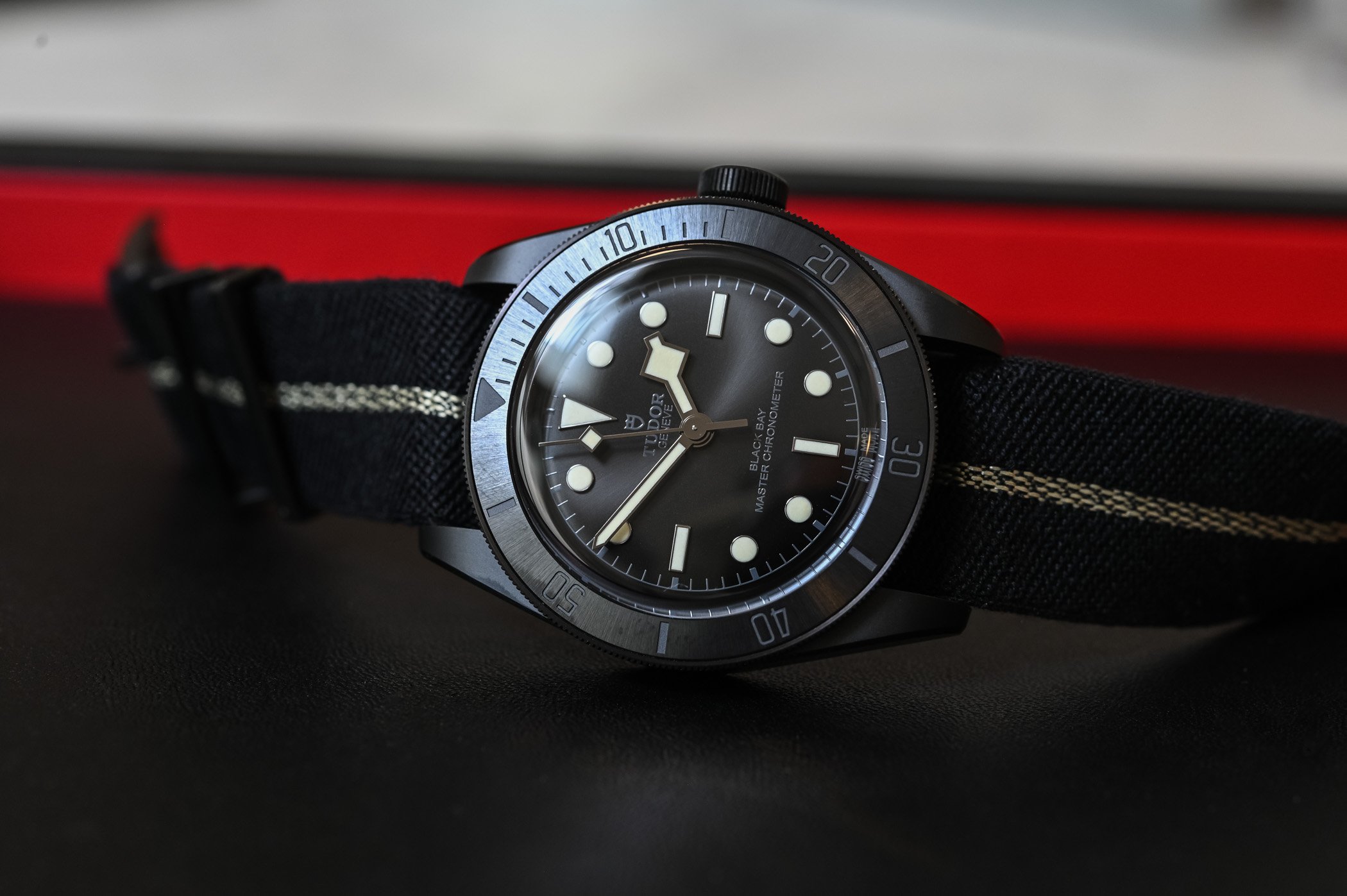
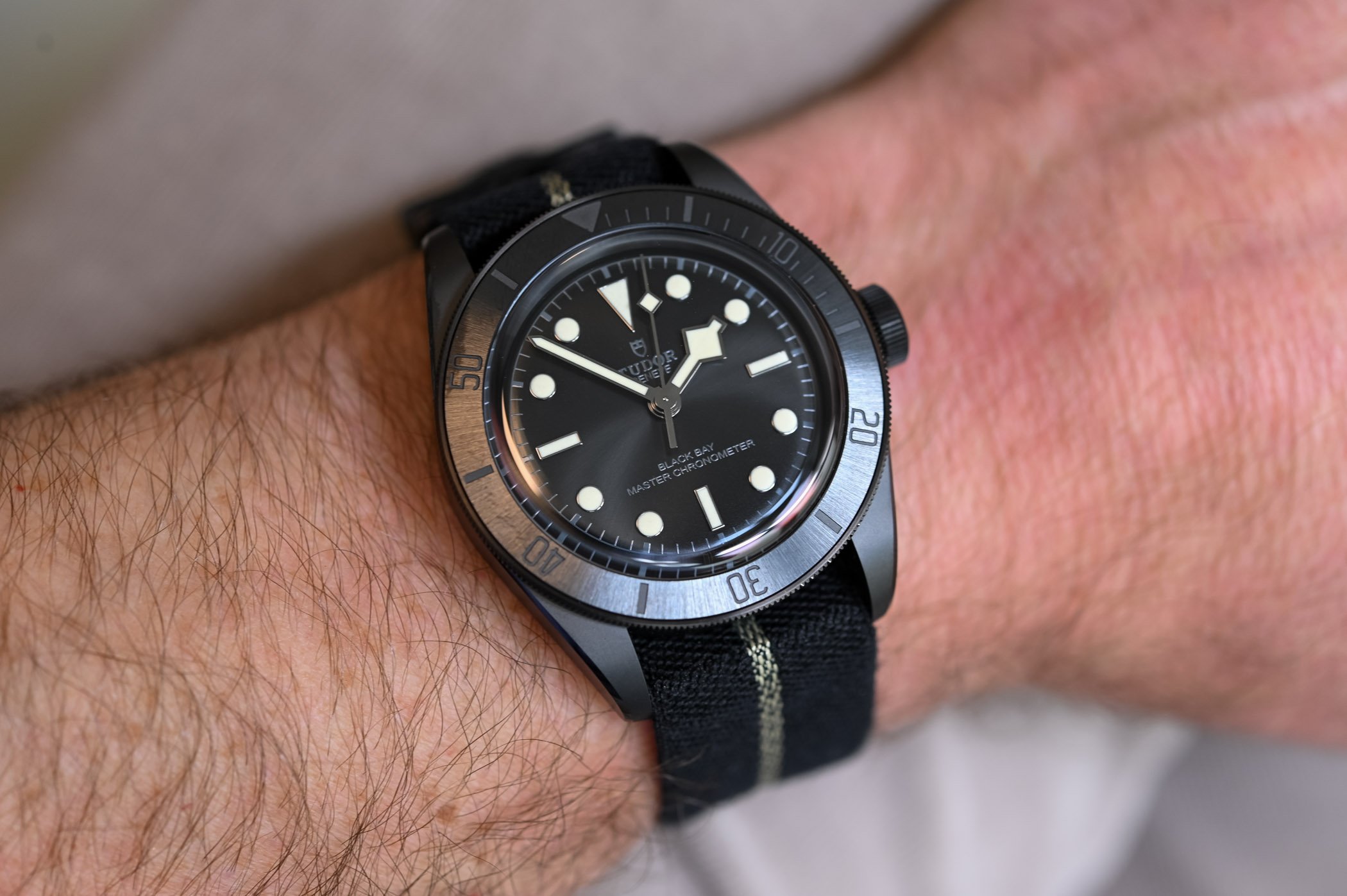



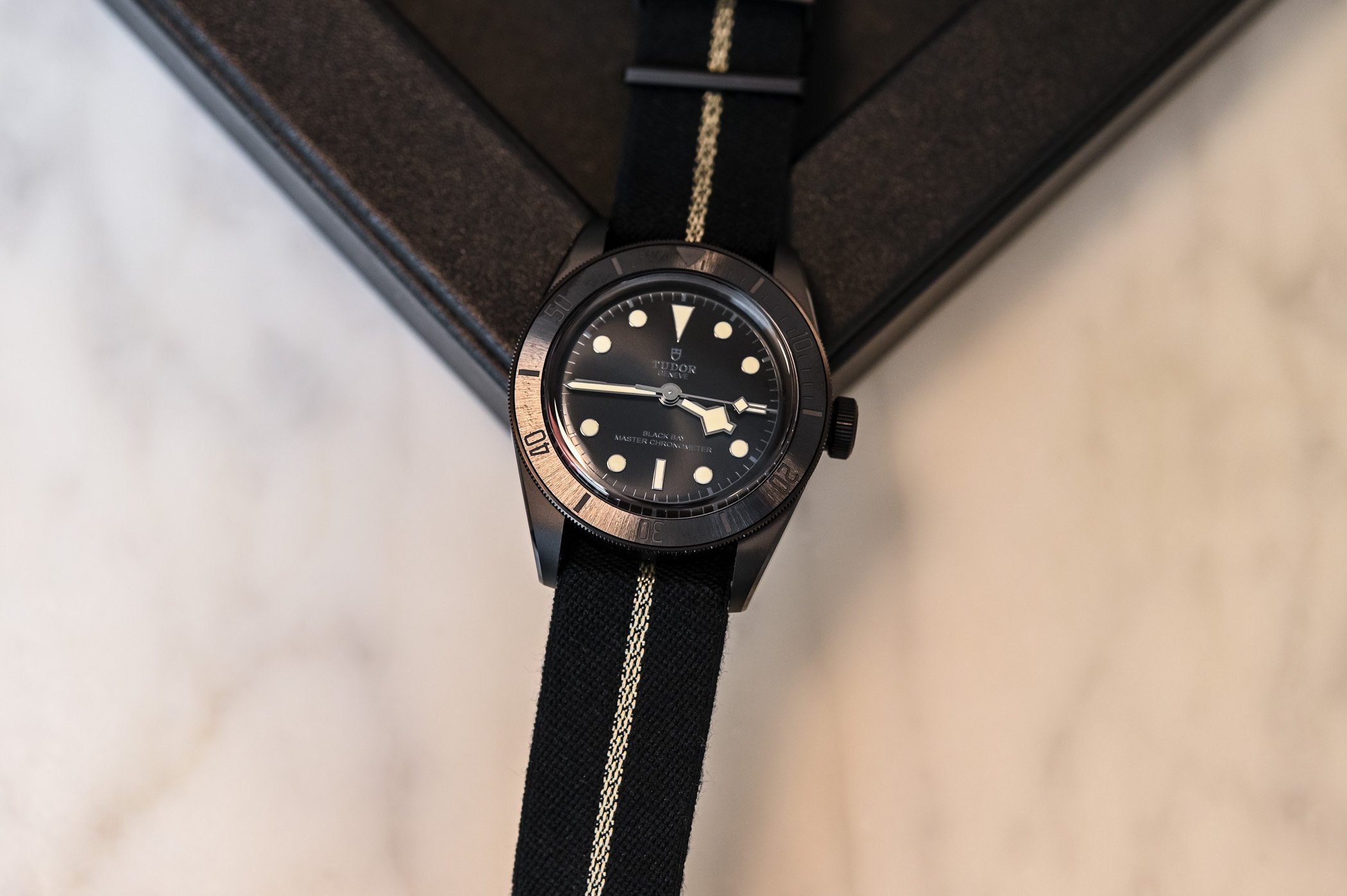
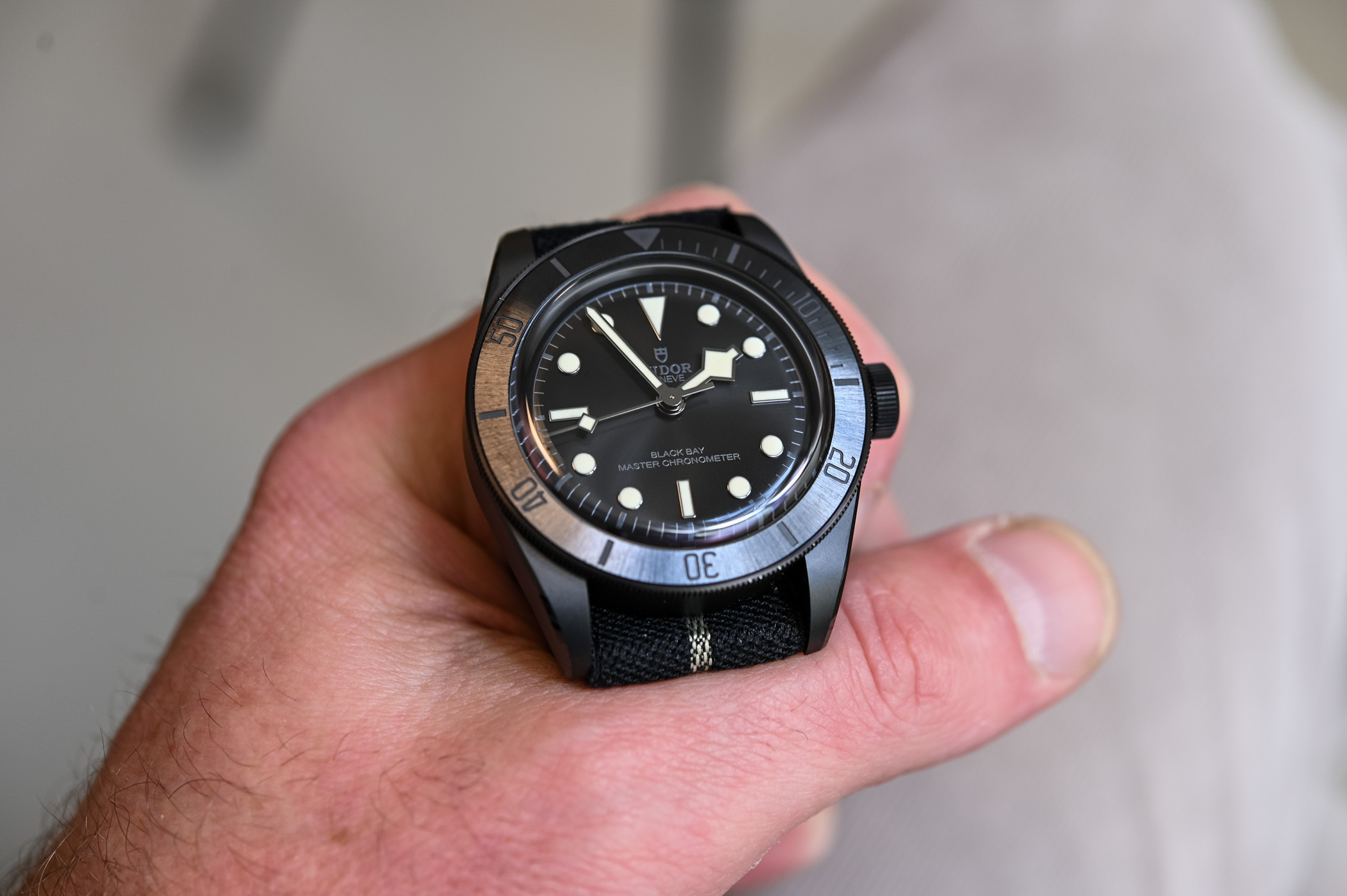
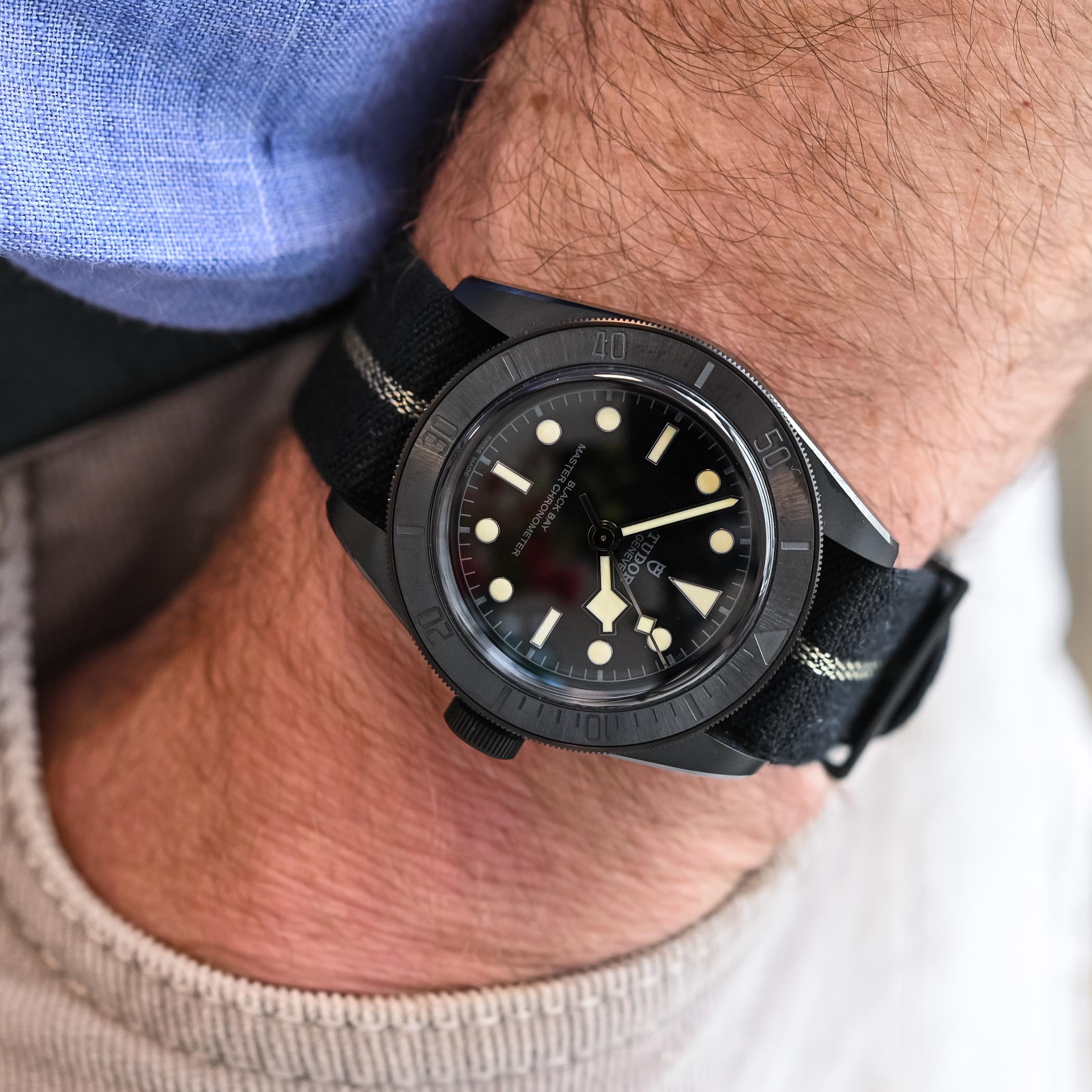

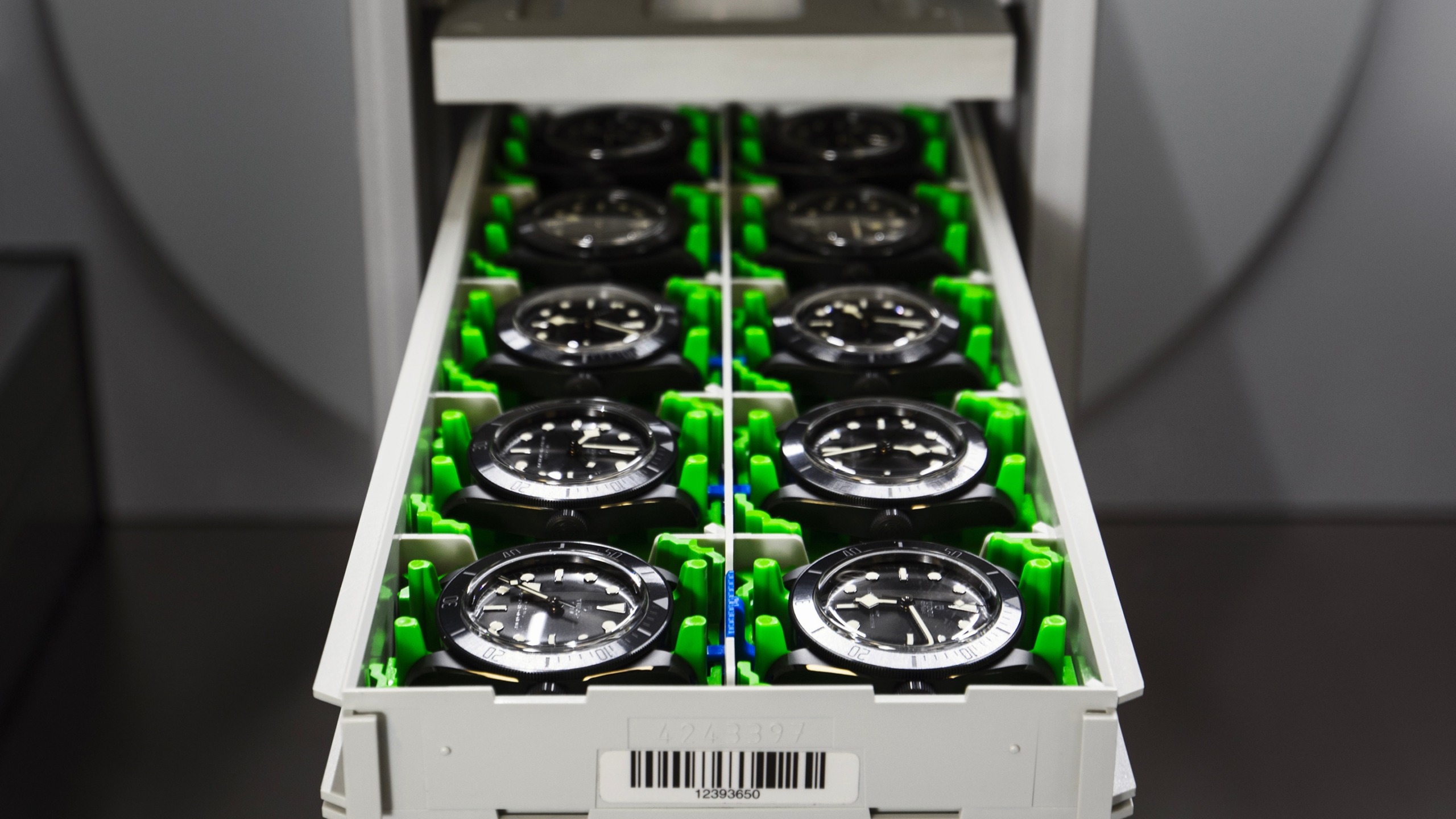
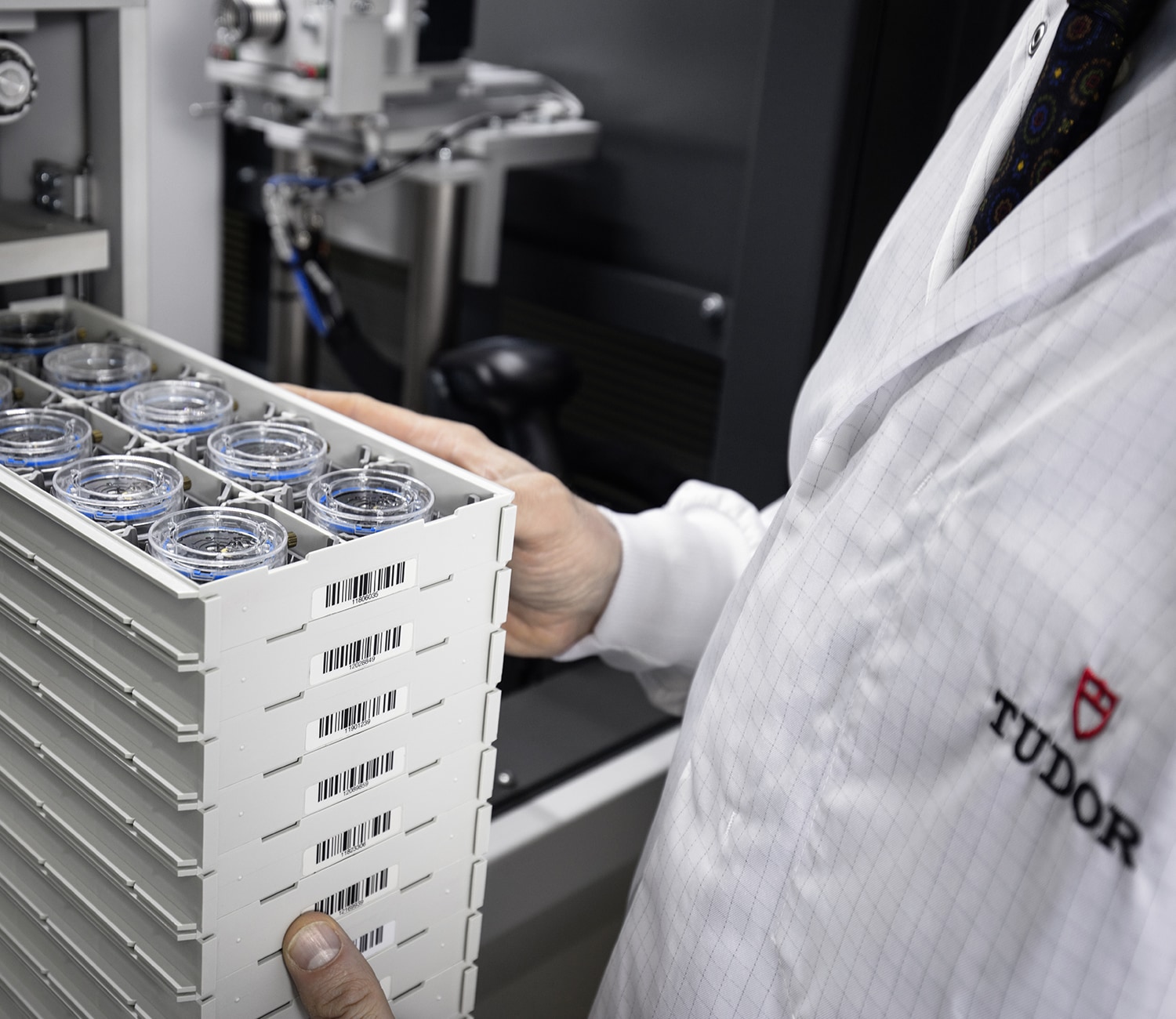
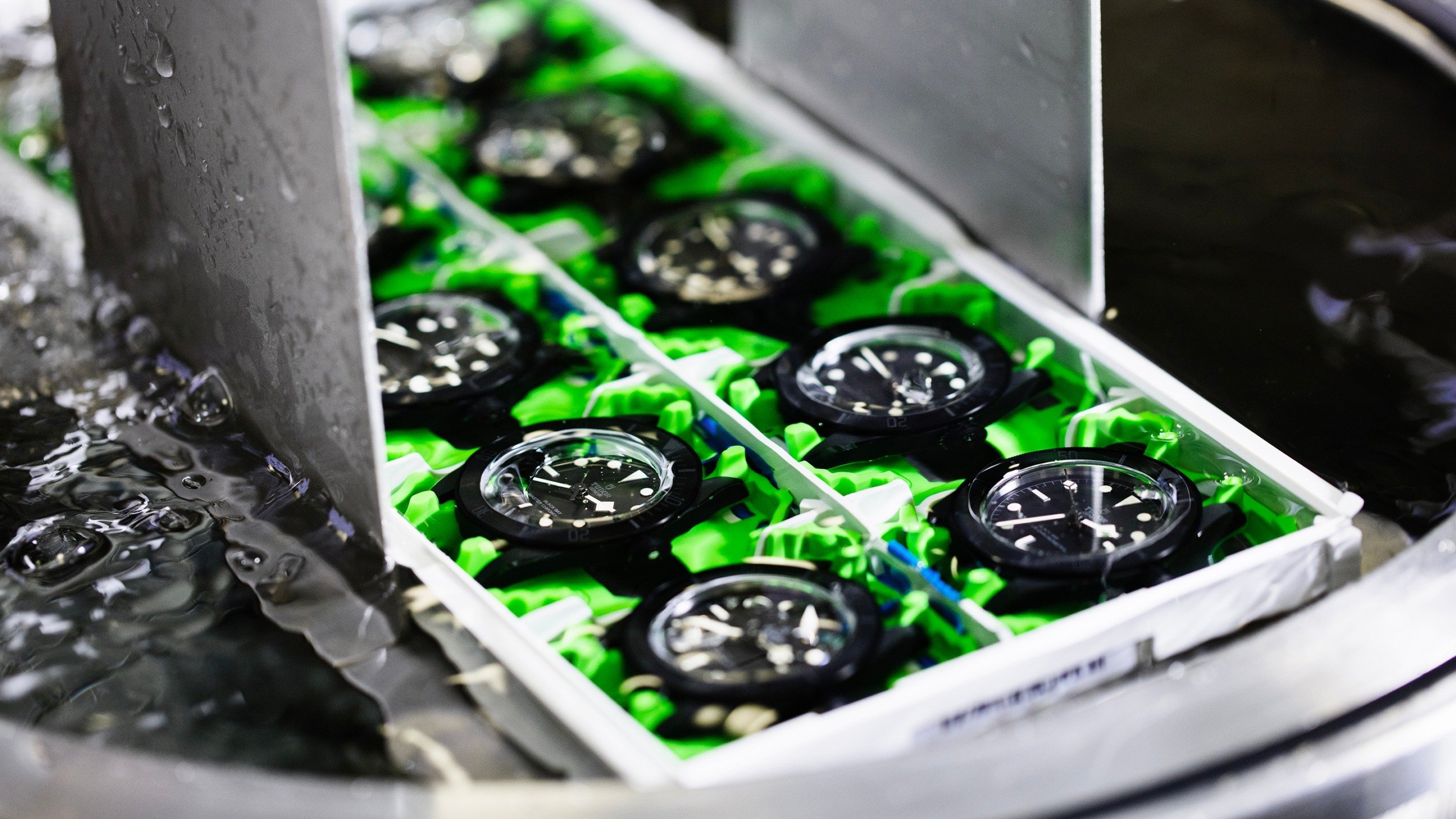
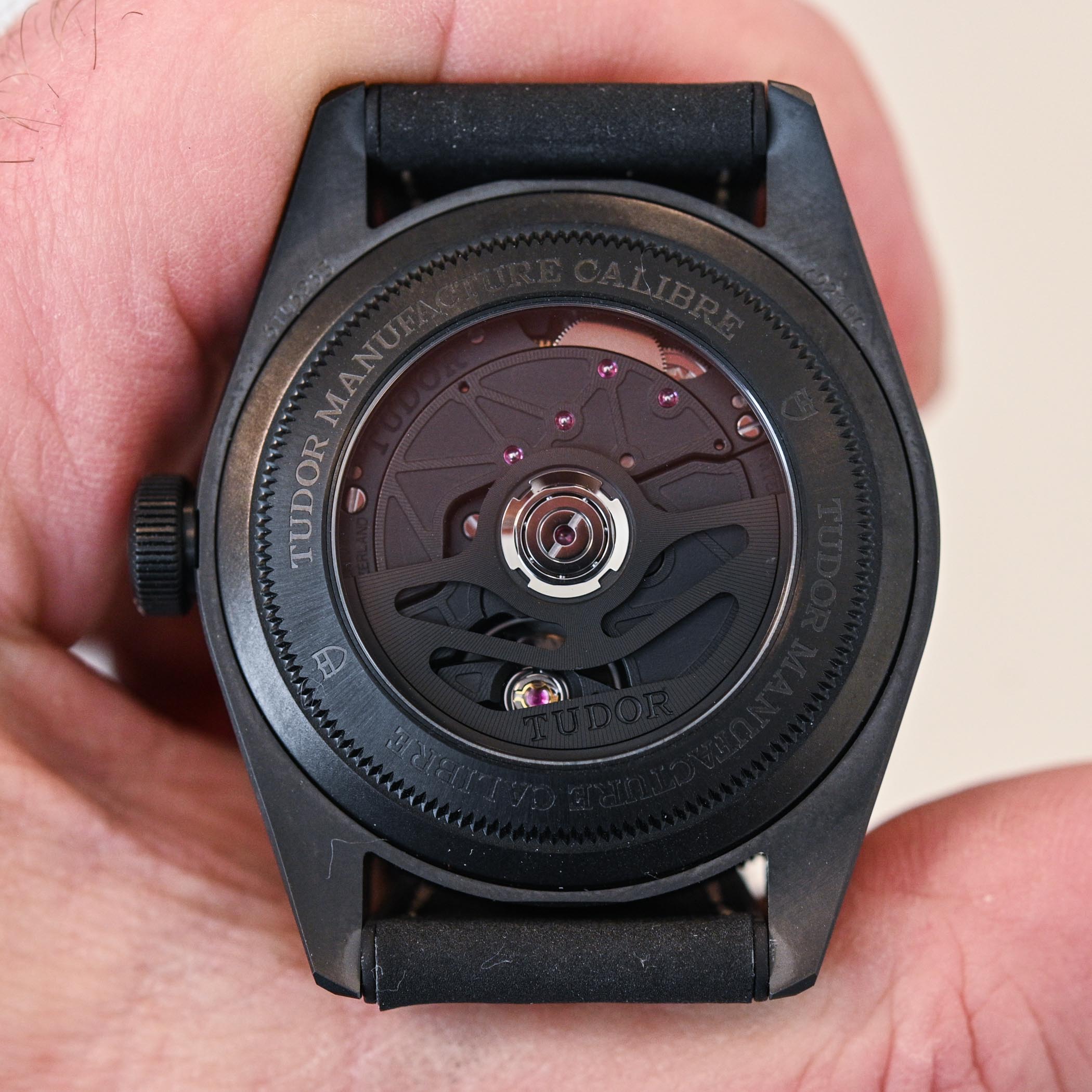

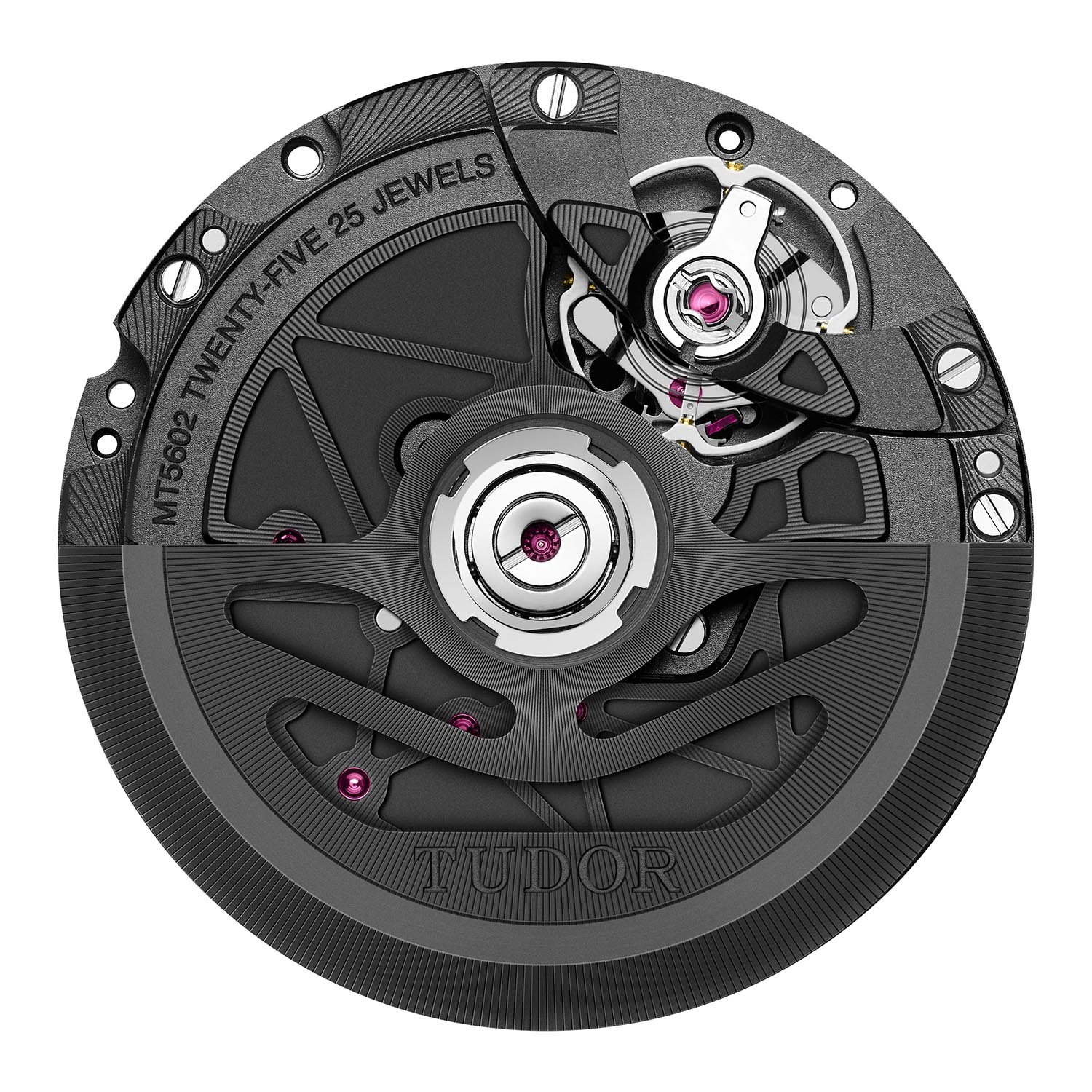



7 responses
Interesting times. Good write-up, cheers Brice.
Thanks for this interesting analysis of the black bay and the METAS certification. I do believe that this is a test-bed for Rolex in moving to a better overall offering from the brand in terms of its movements. Whilst Rolex offer a great and robust product, I do have a niggle with the timekeeping accuracy- out of the 4 models I have (all green seal modern watches) there is only one which comes close to the accuracy of my METAS Omega, the others being anywhere from -4 to +7. My own Tudor BB is actually more accurate than most of my Rolex models. Rolex have many plus points and are an incredible brand but I suspect, as well as hope, that they are using this as an opportunity to stay ahead of the game and continue to be as highly respected as they are presently.
@Gav – Thanks 🙂
I like the watch a lot, but would not buy it because, me being practical and a mechanical watch lover, I need to have a date window, not indicator but a window, and this watch/movement doesn’t have it. But the movement looks are gorgeous!!! And that black finish is a KILLER!!! But is a good watch for the price, being the first from Tudor/Rolex to have this certification that I consider vastly superior to the COSC. Is a shame that METAS is only available to Swiss made brands, that is not good IMHO…..But being METAS-Certified shows the extremes that Omega has gone in terms of Precision and Quality, establishing itself as the foremost brand in this regard in the world of Mechanical Watches!!!! Kudos to Omega, and now Tudor!!!!!
Impressive movement, why bother with Metas, with so little contrast between the dial and minute track, unless the light is really good you’re just guessing the time. No bracelet or date, no thanks
Indeed a well written article, thank you. If allowed I wish to pose a technical question to the author. In the early days of ceramic cases I kept hearing that they were prone to breaking, my query is has the technology of manufacturing ceramic watch cases come to the point that breaking is no longer an issue?
@Robert – of course they have improved since the early days of ceramic cases. However, and that is inherent to the structure of the material itself, ceramic has far more structural strength than metal and thus, when receiving a shock, it can’t bend and absorb shocks in the same way, meaning that it will be more prone to cracking in case of hard shocks.